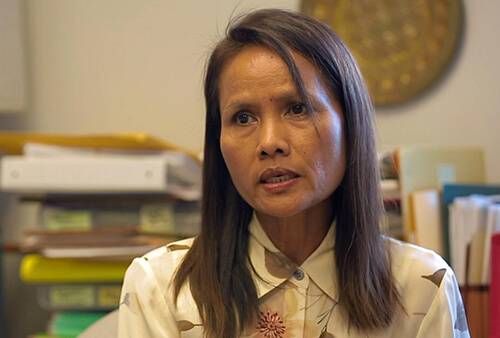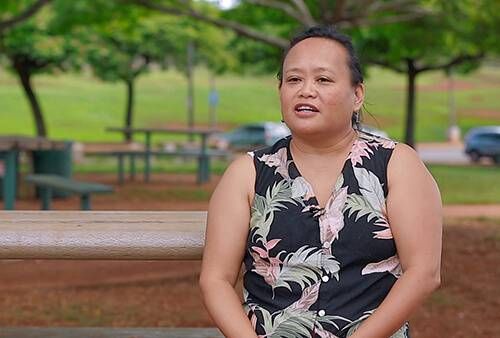One State's Fight to Fund a Family Caregiving Law
Hawaii nearly provided long-term care help, but got stuck on how to pay for it
“I have neighbors who are selling their home to take care of mom and dad,” says Clementina Ceria-Ulep, chair of the Department of Nursing at the University of Hawaii at Manoa. She also co-chairs a long-term care task force for FACE, Faith Action for Community Equity, a grassroots interfaith nonprofit.
Since last summer, Ceria-Ulep has advocated for legislation that would provide a kind of universal long-term care insurance for the people of her state. But opposition to the bill and deferment by a legislative committee on Feb. 29 mean that she and other supporters are retooling now for next year’s legislative session.
Many of Hawaii’s "kupuna," or elders, want to stay in their homes, even as they need more supports and services. For others, moving to something like assisted living is not an option financially.
“This would actually provide relief for caregivers at home who cannot afford to place their loved ones in [long-term care facilities] because of the very, very expensive cost,” she says.
Others Paying Attention
No other state has done what Hawaii is attempting to do, so if a bill succeeds, it will be groundbreaking. Others are watching to see what happens here, says Hawaii State Senator Roz Baker, a Democrat. “We do know that other states are trying to solve the same problem.”
Howard Bedlin, vice president of public policy and advocacy for the National Council on Aging, said at the American Society on Aging this week that Hawaii "made a good start.... Washington state and Minnesota are doing some interesting things. But I don't think this needs to be a state solution; it needs to be a federal solution."
Baker authored her state Senate version of the bill, which would have funded a defined-benefit program for families: giving them up to $70 a day for up to 365 days of care. To qualify, a family member would have to be unable to do two or more “activities of daily living,” such as walking, bathing, dressing or eating. The money could be used for anything that would help the family give good home-based care and enable caregivers to keep working. That could include adult day care, mobility equipment, home health aides, chore help for an elder or respite care to give family members a break.

“One of the things that we certainly don’t want is for folks in their 40s and 50s to leave their jobs and their ability to earn retirement benefits because they’re having to care for someone,” Baker says.
A 14-Year Wait for Funds — and Counting
Long-term care has been on FACE’s agenda for about 20 years. “But it’s No. 1 at this point,” Ceria-Ulep says, “because people are beginning to feel the burden of caregiving among families.”
Hawaii is on the leading edge of a trend toward larger populations of the elderly. Urban Honolulu has the highest percentage of people 85 and older of any place in the United States, at just over 3.5 percent, according to a report from the U.S. Census Bureau. Between 2000 and 2010, while the 85+ population grew by roughly 30 percent nationally, it soared by 72 percent in Hawaii. More recent Census data show that the number of Hawaiians 60 and older is growing four times faster than the state’s population overall.
In 2002, Baker says, Hawaii’s legislature put the defined-benefit program into law to help families buy long-term supports and services. The challenge since then has been how to fund the program and make it real for Hawaii’s residents.
The 2002 legislature “wanted to give people a year — and it not being an election year — to think about the program and why it was important, and digest the fact that it was going to need a dedicated funding source,” Baker says. After economic analysis and public discussion, a bill was introduced in 2003 to pay for the program with a half-percent surcharge on Hawaii’s general excise tax. It passed the legislature, but was vetoed by the governor. There weren’t enough votes for an override.
Earlier attempts at state legislation to support family caregivers, going back to the 1990s, relied on a payroll tax or income tax, but they gained less momentum, Baker says. The proposal for a surcharge on the excise tax, which is similar to a sales tax, is the closest that proponents have come to success.
That’s why Baker reintroduced the surcharge in a bill last year. But just like this year, it stalled out in committee.
Between Wealth and Medicaid
The wait for a funded and functioning program means that people like Darlene Rodrigues are saddled paying the costs of home-based care out of their pockets. Rodrigues lives on Oahu with a brother and their mother, who was diagnosed nine years ago with vascular dementia and Alzheimer’s disease.

“She’s ambulatory, which is great. She can dress herself, feed herself, and all of that kind of stuff,” Rodrigues says. But her mother gets disoriented and can’t keep up a home. “She can’t really make decisions. I manage her medications, her doctor’s appointments. Basically, her life,” notes Rodrigues.
Their mother had savings, but the care she needed after a bad back fracture ate up most of that money. Now her children pay about $70 a day, three or four days a week, for adult day care. The day care was helping Rodrigues hold onto a 20- to 30-hour-a-week job on the other side of the island until last October, when commuting and road-construction delays became too much.
“It’s too hard to manage a job far away and then take care of her,” Rodrigues says. Leaving the office at 5:00 or 5:30 pm meant getting home at 7:30, long after her mother was dropped off by the day care van. Rodrigues is currently looking for a job that’s more compatible with her caregiving. “I’m trying to find some work now around where we live,” she says.
Baker explains that her bill was aimed at filling schedule gaps like Rodrigues’s with a few hours of paid help. But it could bridge a bigger gap for families, too.
“The very wealthy, if they’ve had a good financial planner, they’ve either put away [money] or they have long term-care insurance,” Baker says. Low-income families will turn to Medicaid to cover long-term care. But “for the guys that are just above [the threshold] for Medicaid, they don’t necessarily want to have to divest what assets they have to qualify.”
Why Not in an Election Year?
Opponents of Baker’s latest bill said the tax increase would have hurt Hawaii’s businesses and economy. Commission-based workers, who'd pay the excise tax on their commission income, were also against the bigger tax bite. And some who opposed the bill said the tax was regressive, meaning it would weigh most heavily on the very same low- to moderate-income families it was meant to help.
In response, “we’ve got the folks that have done the actuarial analysis looking at the economics of it to figure out how we can adjust the financing program somewhat,” Baker says. The could mean waiving the excise tax surcharge for families who get food stamps, decreasing the surcharge to less than half a percent or reducing the level of reserves required to operate the program and ensure that it’s fiscally sound.
Ceria-Ulep says she was disappointed to hear another kind of objection from legislators, in light of what’s at stake for families.
“Some were saying, ‘This is an election year, and anyone who would increase a tax might not get re-elected,’” she says. “I think that in an election year, that’s when conversations should happen about what’s important to us.”

